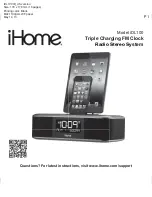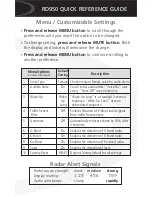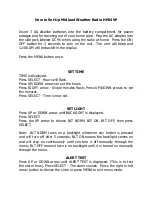
™
8(20)
© Soneco Oy.
V 23.7.2013
Staus: Contents schecked
Author: JR
purposes. The U number can call or control the device but it can not be an alarm
call or a message number.
Telephone numbers are set in the programming mode with sending them as single
text message. The message has to contain between command brackets "<<<" and
">>>" all numbers to be stored, separated by semicolon and without spaces as
below.
<<<number1;number2...>>>.
<<<+358414358414358414319221>>>
or <<<+358414319221>>>
If the X-number is in use, it has to be given before the numbers 1 to 3.
<<<Xnumber4;number1;...>>> ,
<<< Xnumber4;number1;number2>>> or
<<< Xnumber4;number1;number2;number3>>> .
If the U-number is used, it shall be given after X-number and before numbers 1-3:
<<<Unumber4;number1;...>>> or
<<<Xnumber5; Unumber4;number1;...>>>
Any number command replaces all previously stored numbers. A command
<<<EN>>> erases all numbers (
E
rase
N
umbers). If <<<EN>>> is rejected, the
command is <<<CLRN>>>.
6. Setting the alarm message
Unless the alarm message has been set by the user, the message is ”SOS
ALARM”.
The message is set in programming mode with a message to the device. The
message has to contain between command brackets “<<<” and “>>>” a command
"sms:" and the message with a maximum length of 150 characters as below
<<<sms:Own_message>>>
E.g.<<<sms:Contact reception>>>






































